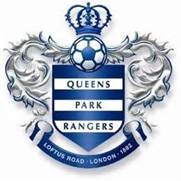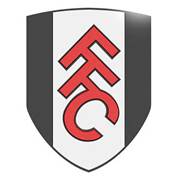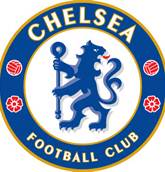The Championship Playoff final on Monday the 27th between two London sides, Crystal Palace and Watford, got me thinking about some of the greatest matches ever played in London. This is going to be a three part piece were I take a brief look at some of the well-known clubs in the capitol as well as some of the best matches in history. Yes, I know that some people will wonder about other note able matches, but these are the ones that I feel are most noteworthy. And I might do a few pieces about some of the clubs in lower divisions depending on the success of this piece.
Queens Park Rangers, or sometimes just simply known as QPR, and is based in White City, London. They were formed in 1886 when two clubs, St. Jude’s (1884) and Christchurch Rangers (1882), merged together to form the current club. Queens Park Rangers got their name because most of the players on the squad were from the Queens Park area of North-London. They became a professional club three years after that. QPR set and still holds the record for playing in twenty different stadiums until finally settling down at Loftus Road until 1931, where they would move around a little while longer to try and bigger crowds to their games.
In 1966-67, Queens Park Rangers won the third division and, thus, were subsequently promoted to division two. The club was also the first third division club to ever win the League Cup, and they did so by defeating West Bromwich Albion three goals to two. The following season, 1967-68, the received a second promotion in succession, and were in the first flight in English football in their history, after nearly 80 years in existence. Unfortunately, the Rangers only lasted that one season in the top flight for the time being, and would stay in that division for the next four years.
Terry Venables took over as manager for the club in 1980. Two years later, his side reached the FA Cup final, while still playing in the second, against holders Tottenham Hotspur, but only gave up one goal during the match, the game winning goal. Queens Park Rangers would return to the first division the very next season and would finish in fifth place, which was good enough for a UEFA Cup Qualification spot. Venables, however, would go on to manage FC Barcelona the next season.
Gerry Francis, who was a key player for the club in the 1970s, was appointed manager in 1991, and he guided the club to a mid-table finish. QPR were also co-founding members of the current Premier League, and finished fifth again. Francis was in charge of one of the most famous wins in the clubs history when they defeated Manchester United 4-1 at Old Trafford on New Year’s Day on live TV back in 1992. Francis’s Queens Park Rangers were relegated at the end of the 1995-96 season, and Francis resigned after an up and down reign.
Ian Holloway, another former player at the club, became manager after taking over for Francis’s second stint towards the end of the 2001, but was unable to keep them up in the second division and the club was relegated to the third division after more than 30 years. The club would go into administration and would struggle for a few years with investment issues and were under a lot of boardroom controversies. Flavio Briatore and Bernie Ecclestone, Formula 1 team owners, invested in QPR to help them get out of debt and return them to the Premier League. Further investment towards the club promised the QPR faithful that they would return to the top flight of English football within the next four years.
Queens Park Rangers push to return to the top flight of English football began in 2008 and appointed Iain Dowie as manager, but Iain only lasted 15 matches as manager before being sacked. On April 30th, 2011, QPR were awarded promotion by defeating Watford 3-0. However, an investigation was filed by the FA shortly after that and a point deduction could have been in place, but QPR were only found guilty of 2 of the 7 charges, and were only given a fine of £875,000. Unfortunately again for the club, they have been relegated once more with Harry Redknapp at the helm. Hopefully good times will come in the next few years as they
Fulham Football Club was originally started way back in the year 1879. But back then they were named Fulham St. Andrew’s Church Sunday School and the players of those days were mainly worshipers from the Church of England in West Kensington. This group of amateurs won their first trophy as a football club by winning the West London Amateur cup back in 1887. The club shortened their name the following year to Fulham Excelsior. Excelsior entered the 1893 West London league and won it on their first attempt at it, which is a pretty major accomplishment for a club that had amateur status for their first 14 years in existence.
Fulham Football Club started playing in their current stadium, Craven Cottage, back in 1896 and is currently the oldest established club that plays in southern England, playing professional football. There are other clubs that are several decades older than FFC, but they are currently playing non-league football for the time being. The club gained professional status on December 12th, 1898, which was the same year they joined the Southern League’s second division. Fulham earned promotion in 1903 to the first division of the Southern League and would win the division two times in a row in a span of just three to four years later.
After back to back Southern league championships in 1905-06 and 1906-07, Fulham joined the second division of The Football League. That first season in The Football League saw Fulham finish in fourth place just three points behind promotion to the first division. They would however, make a deep run in the FA Cup that season, which includes a victory over Luton Town in a match that was 8-3 away from Craven Cottage. Newcastle thrashed them in the semi-final of the FA Cup 6-0, which is still a record for the heaviest margin of defeat in this round of the cup.
Fulham’s first season in Division Two would be their highest that the club would achieve in just over twenty years when they were relegated to the third division of the Football League. After finishing in 5th, 7th, and 9th, out of 22 teams, in their first three years, they gained promotion back to the second division after a very successful fourth year down in the third division. Fulham Football Club scored 111 goals, won 24 out of 42 games, including a 10-2 victory over Torquay United. After a few poor seasons back in the first division, Fulham found themselves rock bottom, 22nd out of 22 teams, thus being relegated once again from the top flight of English football.
In 1958, Fulham FC signed Graham Leggat, who scored an astounding 134 goals in 277 appearances, making him the fifth leading goal scorer in the clubs history, and with his help, they finished 10th in the league, which was their highest position in the league until the 2003-04 season where they finished 9th. There was more of the same misfortune for the club until Egyptian business owner, Mohamed Al Fayed, took over and provided more financial stability for the Cottagers.
Al Fayed’s first involvement as owner was that he established a two tier type of management where the club would be more successful in the long wrong. Ray Wilkins and Kevin Keegan got into disputes about who the starting XI would be and so at the end of the 1998 season. Kevin Keegan took over complete control of the managerial role and the following season, Fulham FC won a total of 101 out of 138 possible points, earning them promotion once again. Jean Tianga was put in charge a couple of years later and gave Fulham their third promotion in the last five seasons and again earned 101 points and signed a lot of young French players, including Louis Saha, which also made Fulham the first ever English football club to gain over 100 points in two successive years.
The Cottagers finished in 13th place in their first ever season in the Premier League. Fulham avoided relegation the following season by winning ten out of a possible fifteen points and because of this, Jean Tigana’s contract was not renewed at the end of the season. Roy Hodgson really transformed Fulham into a stable Premier League club. However, it did not start out as planned and he only one won game in the first month as manager of the club. Fulham continued to struggle for the rest of that season, but again, managed to avoid relegation.
The following season was a far better season for Fulham Football Club. Brandon Rodgers’ side finished 7th in the Premier League and earned qualification to the 2008-09 UEFA Europa League. Fulham reached the finals of the Europa League and was deemed the most successful campaign in their history, despite the twelfth place finish.
Gus Mears acquired the Stamford Bridge athletics stadium in 1904 and his only goal was to turn the area into a football stadium. After an initial offer to lease it to nearby Fulham FC, he decided to create his own football club the following year. Chelsea FC was founded on March 10th 1905 and were elected to the Football League. Chelsea gained promotion to the first division in just their second season, but it was a constant struggle to stay up for the first few years of their existence. In 1915, however, the club reached the final of the FA Cup, only to lose to Sheffield United at Old Trafford.
In 1920, the club finished third, Chelsea’s highest finish in history up to that point in time. Success would not happen quickly for the west London side, despite drawing big crowds to every match and signing big names to wear the blue shirt. Ted Drake, former Arsenal and England defender, took over as manager of the first team in 1952 and improved the quality of the youth academy immensely. With his constant focus on developing players from lower leagues and even amateur sides, a trophy came, the 1955 League championship cup.
The 60s were a time where Chelsea, under player-manager Tommy Docherty, were so close to winning trophies upon several occasions but could not seal the deal completely. His starting elevens were built around talented youngsters that had shown great strides in the youth academy and earned their spot in the first team. They would win the 1970 FA Cup, beating Leeds United 2-1, under Dave Sexton. The 1980s were not a great time at Chelsea Football Club as the team were relegated because of the selling of star players due to financial instability.
Chelsea’s form in the new Premier League was not convincing enough for their local supporters who feared that they would be relegated once more, even with reaching the final of the 1994 FA Cup. Ruud Gullit was named player-manager in 1996 and acquired the signings of several international players that helped the club reach and win the 1997 FA Cup and was a perennial powerhouse in the English Football League. The following season, Gullit was replaced by Italian Gianluca Vialli, and under him, Chelsea won the League Cup Final in 1997, the Cup Winners’ Cup Final in 1998, the FA Cup in 2000, and reached their first ever UEFA Champions League.
Roman Abramivch bought the club from Bates for around £140m and would shape the club into what it is today and has continued the clubs success and has helped guide the club to their first ever Champions League and Europa League trophies, despite instability in their head manager role until now.


